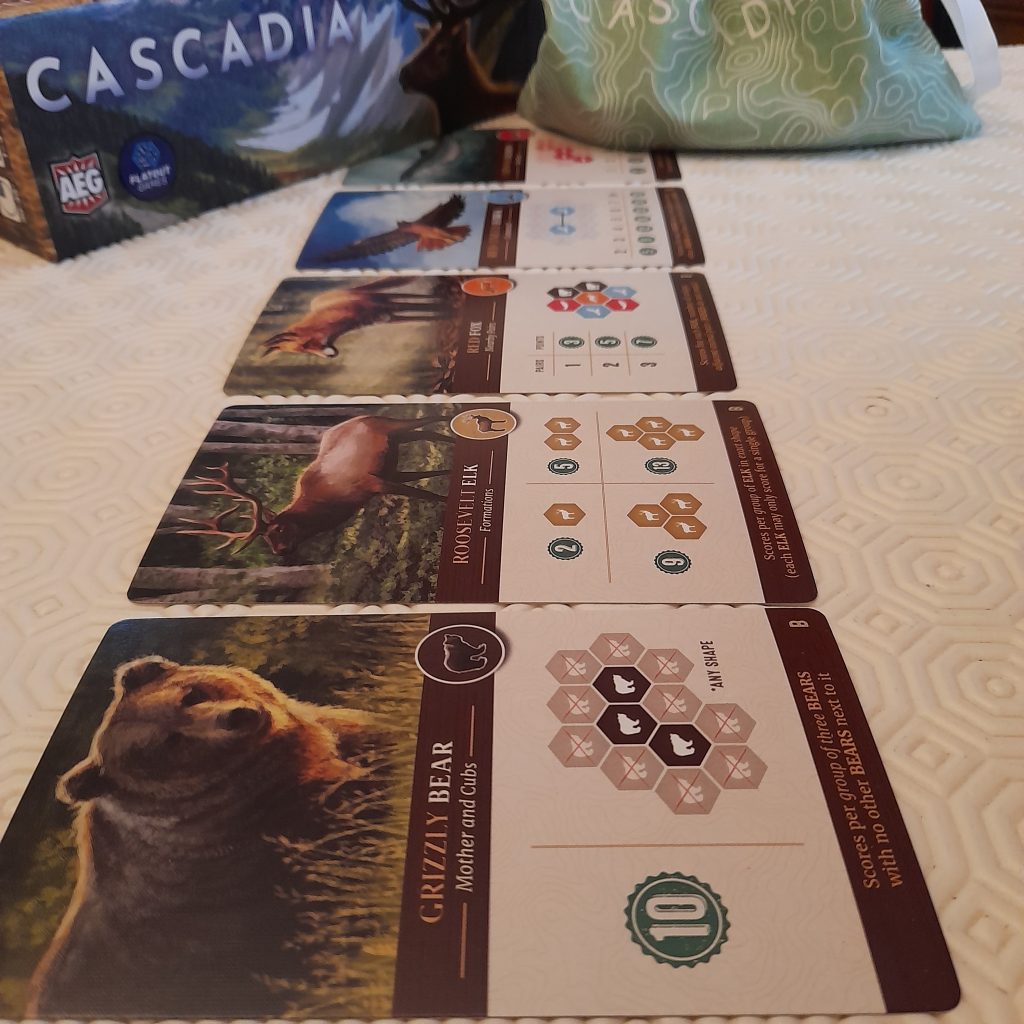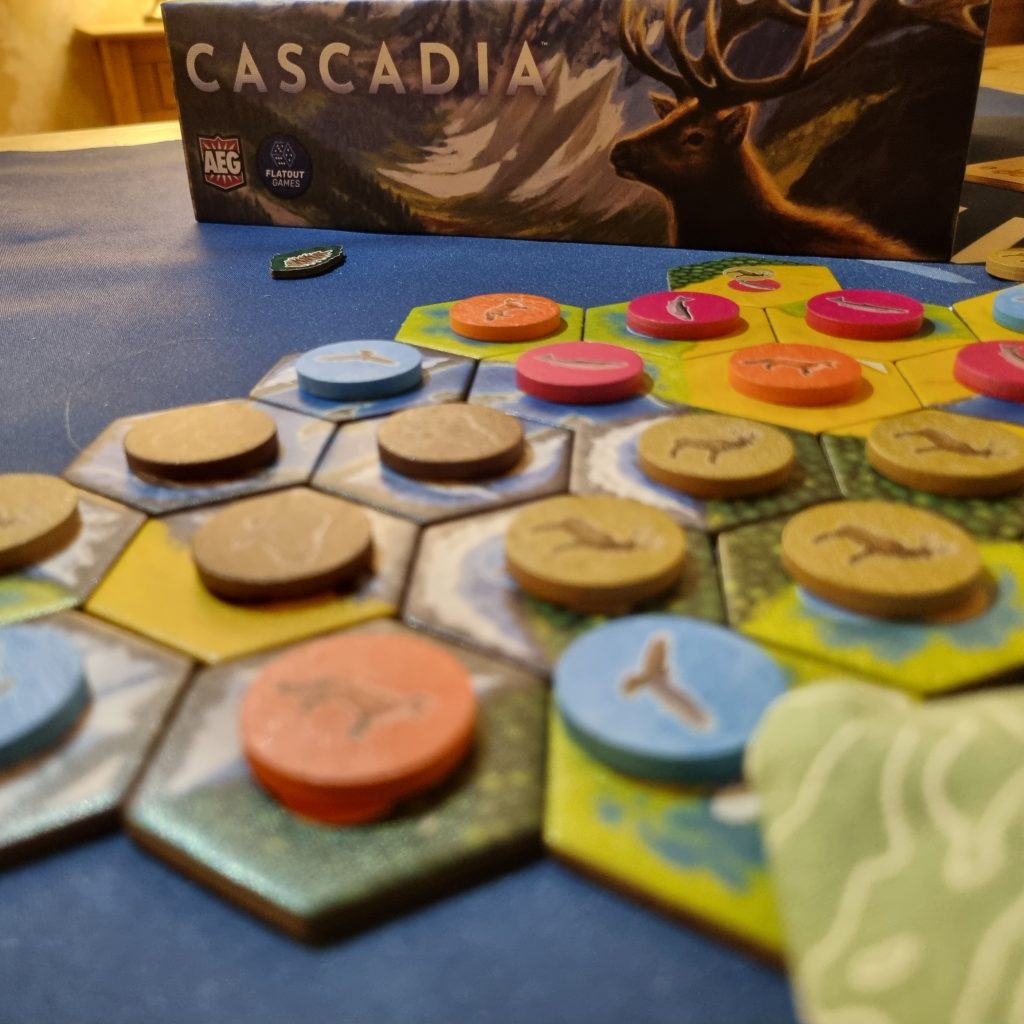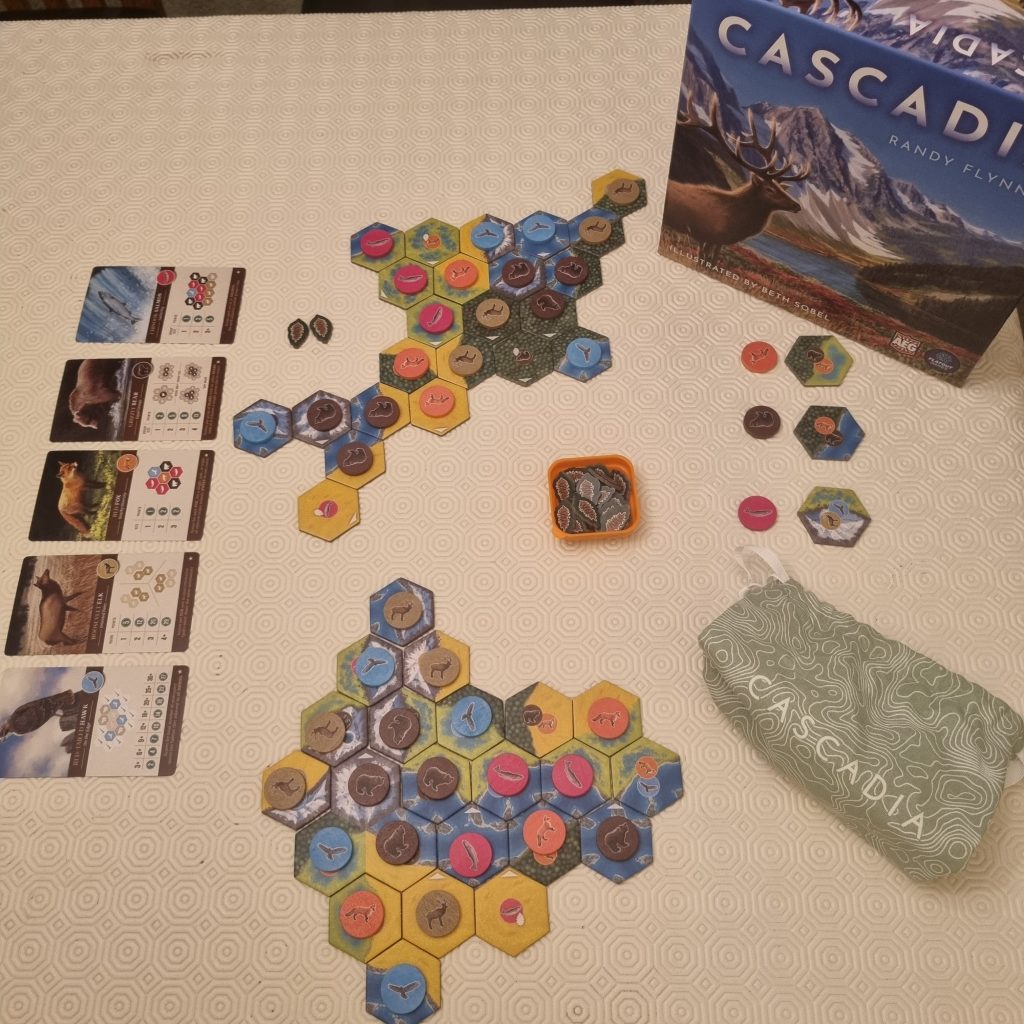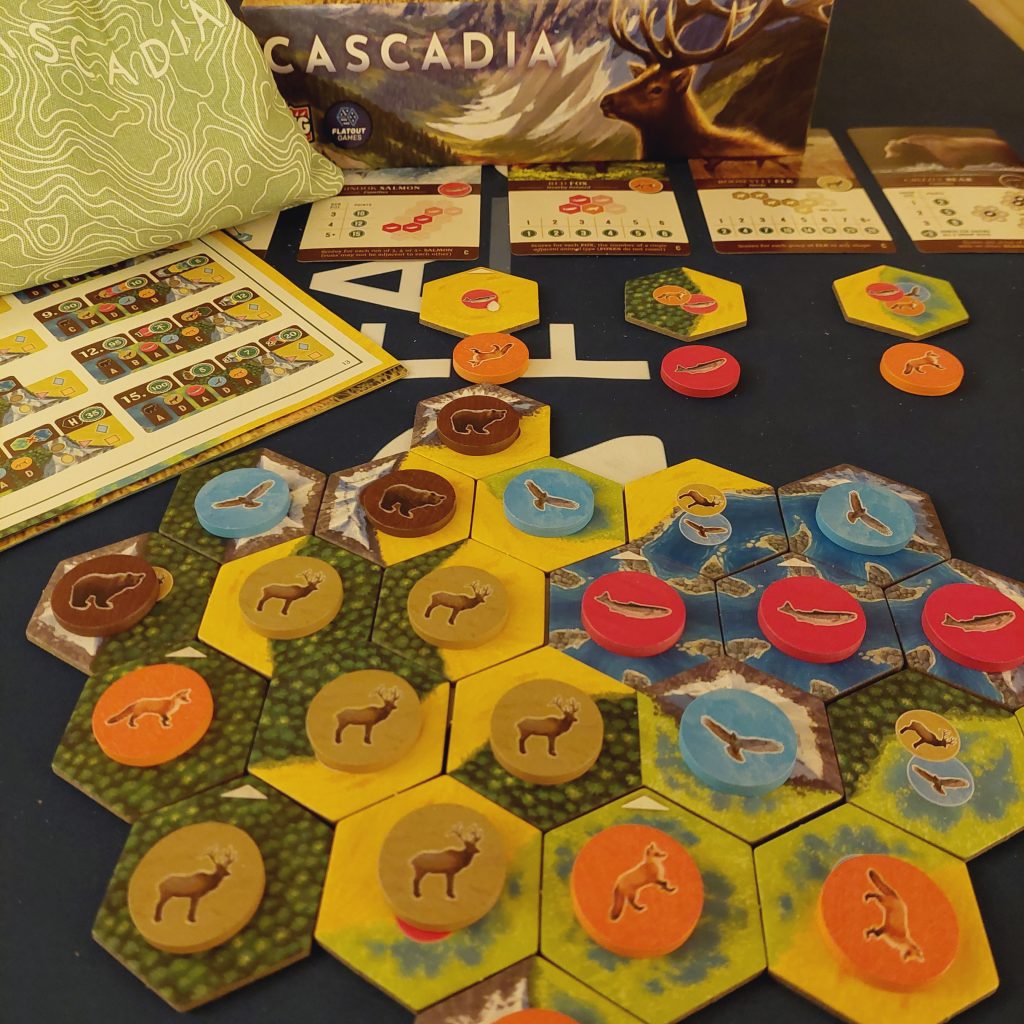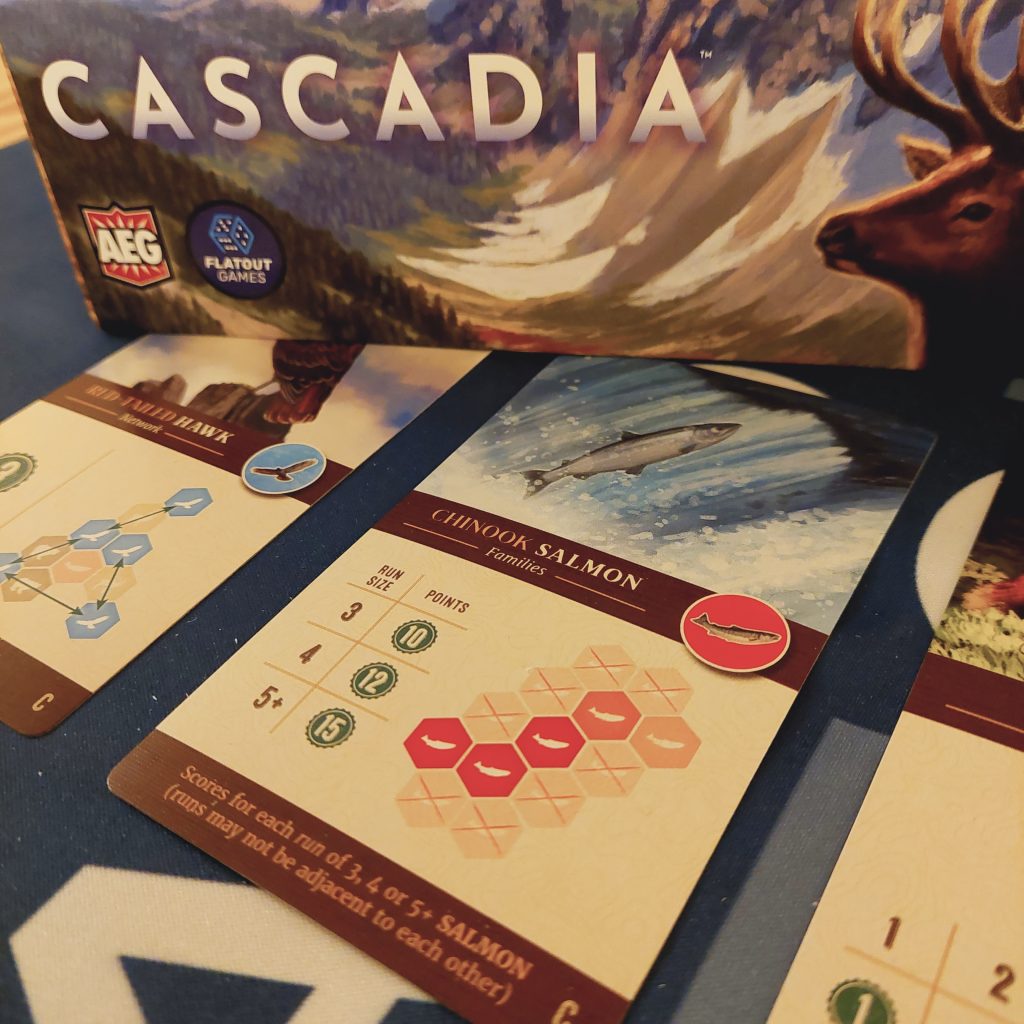Heading into the beautiful Pacific Northwest alone, Cascadia by Flatout Games and AEG is a gorgeous solo adventure.
Publisher: Flatout Games, AEG Games
Designer: Randy Flynn
Artist: Beth Sobel
Release date: 2021
1-4 Players
Age: 10+
30 – 45 mins
Favouritefoe score: 9/10
*Gorgeous * Tile Laying * Spatial Puzzle * Solo Mode * Accessible * Versatile * Thematic *Easy to Learn * Scoring Objectives * Variable Set Up *
I’m Sorry, Randy!
Before I do anything else, I must apologise to one of the loveliest people in board gaming, Randy Flynn (who you can find out more about in our interview here). I kickstarted Cascadia with wild enthusiasm ages ago, and I have been playing it since it arrived. And when I say playing, I mean a lot.
I kept adding it to my “to-do-a-review” list. Right at the top in bold underlined. And I normally refuse to leave a list unchecked. I even added a (what is now a very flexible interpretation of the words) “COMING SOON!” entry onto my review page. But then I would get the box out as a visual reminder and would find myself using the time to play it again instead of writing about it! So, Randy, I am sorry it has taken me this long to share my thoughts on Cascadia!
So, with restraint ratcheted up, I’m going to tell you about my experiences with Cascadia. But, I’m going to do things a wee bit differently to my usual reviews. I am going to focus on the solo play. Because, dear friends, Cascadia has become one of my all-time favourite go-to single player games. And, that means it inhabits a very precious place in not only my collection, but also my heart.
Before I reveal why, however, here’s a very brief overview of what Cascadia is, what you are trying to achieve, and how you go about doing it.
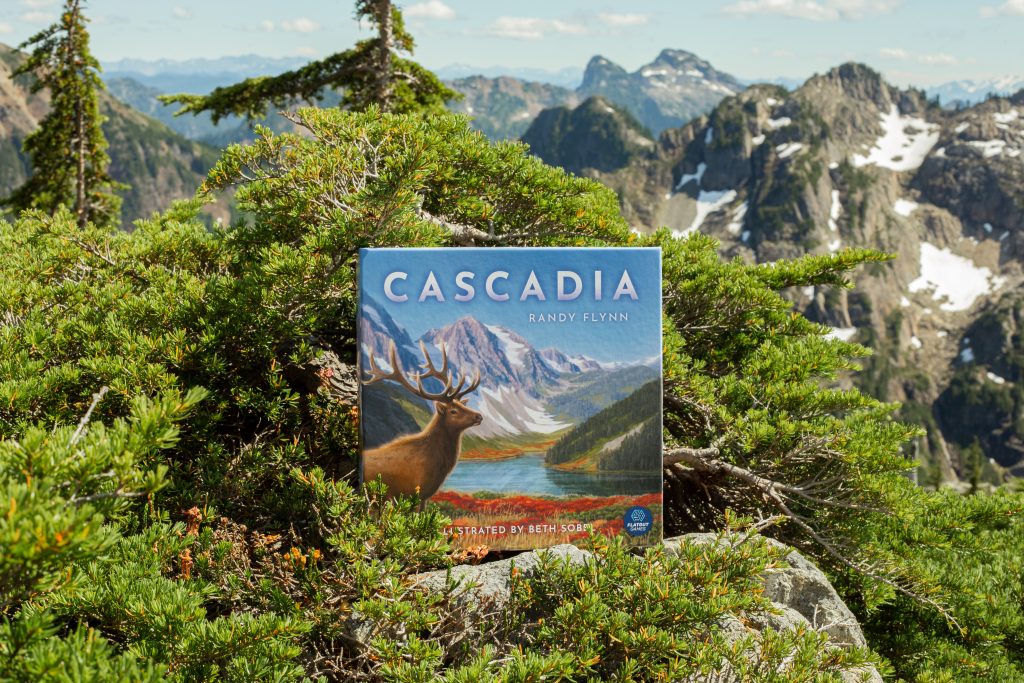
Playtime In The Pacific Northwest!
Cascadia is a tile laying game set in the gorgeous Pacific Northwest, USA aka the “Cascadia” region (aha!). Each turn you pick and place hexes to create terrains that provide the correct habitats for the diverse and beautiful local wildlife. It is a strategy game that brings in territory building, pattern matching, and hand (well, tile) management.
Regardless of player count, your starter tile is a 5 Habitat Tile hex combo – it will show all 5 terrain types (Mountains, Forests, Prairies, Wetlands, and Rivers) with one or more animals on each (Bears, Elk, Salmon, Hawk, and Fox) – they call those areas home. The number of Habitat Tiles in the pool depends on the number of competing conservationists around the table, but the set-up and gameplay is the same.
Each turn you then pick a Habitat Tile and associated Wildlife Token from the 4 randomly paired choices on offer. Your Habitat Tile of choice must be placed next to an existing hex in your region so that at least one side is next to another tile. Unlike games like Carcassonne and Isle of Skye, adjacent terrains don’t have to match, but you’ll get more points at the end of the game if you are able to create “corridors” of a single terrain type (with even more bonus points if yours is the largest!).
The accompanying Wildlife Token can be placed on any tile (new or existing) showing that animal. Only one Wildlife Token can be placed on each tile, and once it has settled there, there’s no uprooting it to somewhere else!

Buddy Up!
In most cases, you must take the Habitat Tile and Wildlife Token below it as a pair. But, if you place an animal on a tile with a Nature Token on it (called a “Keystone Tile”), on a later turn, you can use that little bonus pinecone to either (a) pick and mix a pair that suits you better, or (b) remove the Wildlife Tokens and replace them before making your selection.
When you’re done, the pool of tiles and tokens are replaced at random, and the next player takes their turn, choosing from the 4 pairs on offer. Note that if 4 Wildlife Tokens are all the same, this is known as “overpopulation”, and they are removed and replaced with 4 new randomly selected ones. It can also happen when there are 3 matching animals on offer. But in that case, it is the active player’s choice as to whether those 3 are replaced or not.
The game ends when the pool of habitat tiles runs out (which is, rather satisfyingly, exactly 20 turns per player).
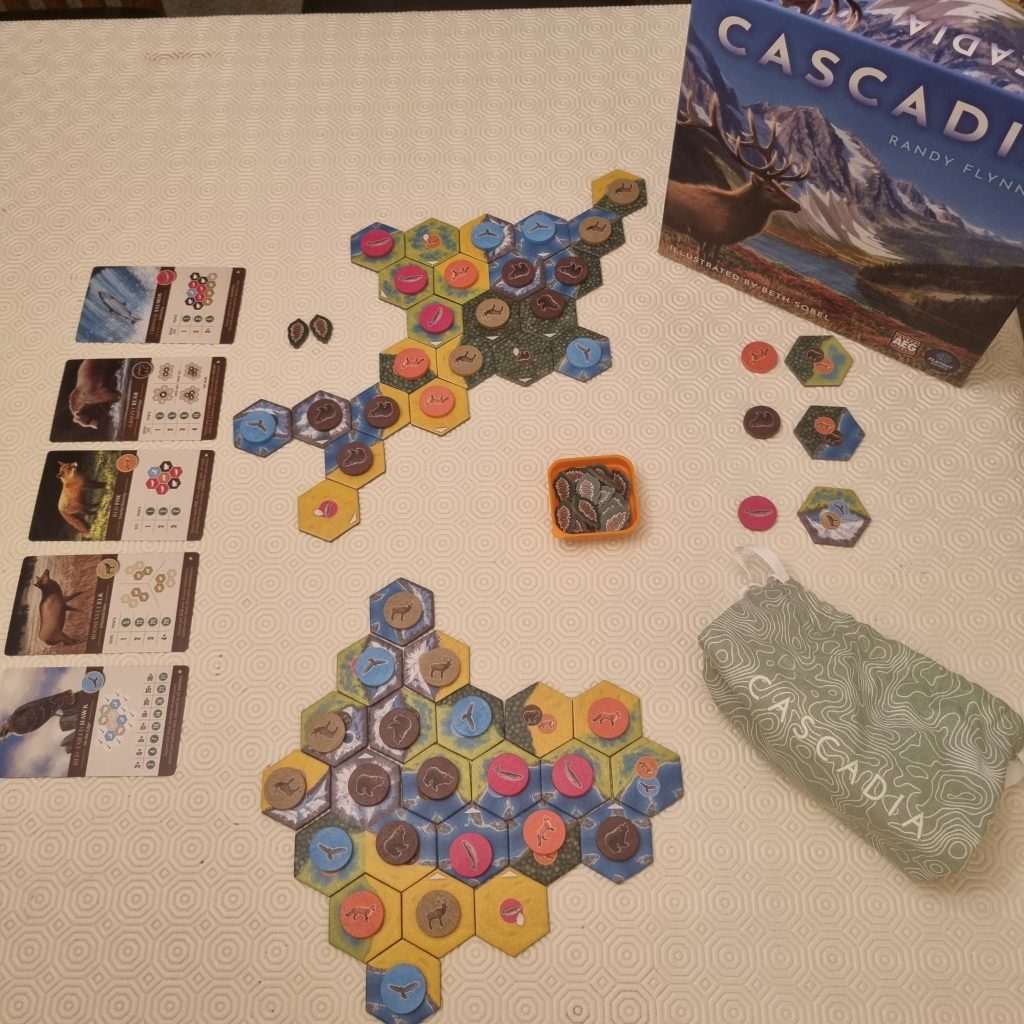
Curious Creatures!
Now, that all sounds rather straightforward. So, here’s where the puzzle ramps up. Each game, there are 5 Wildlife Goals. There is one for each type of featured animal, and there are multiple sets (which can be mixed and matched), such that no single game plays according to the same scoring conditions as another.
The goals are spatial, and seem in keeping with each of the animals represented. So, for example, salmon score higher the more you have in an adjacent run, and Elks like to be with their buddies so score better in groups. They’re fussy though, and have to be in the precise positions shown on the card. Bears are less particular, but they do like a bit of social distancing between their sleuths!
The goals themselves are juicy point providers, but it is impossible to achieve them all and get the corridor bonuses in just 20 turns. On that basis, decisions have to be made. You have to choose what you are going to target, bearing(! in mind the luck of the Token and Tile draw. And then flip reverse your strategy when the wrong Habitats and Wildlife appear!
If that all seems a little overwhelming for you or someone in your group, don’t worry. There are family and intermediate variants that narrow down the scoring objectives.
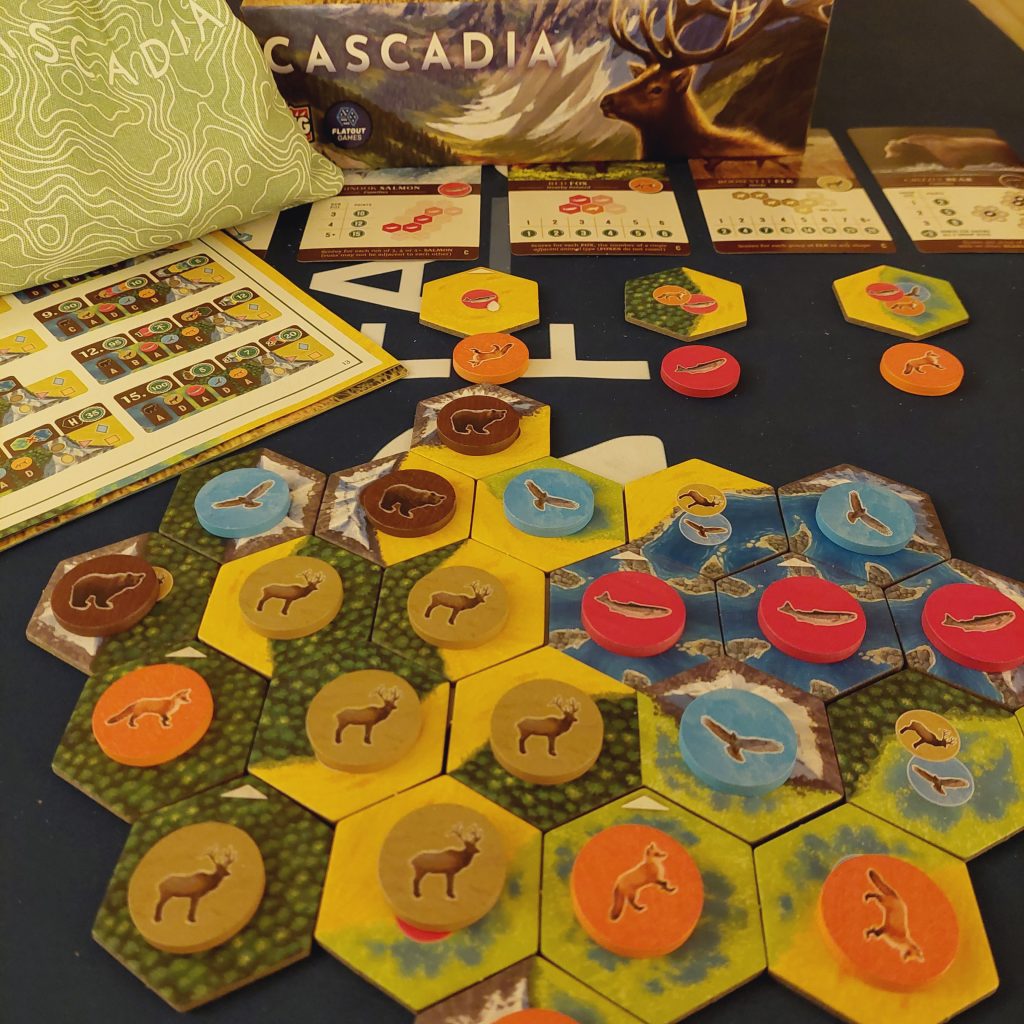
Solo Settling!
Hardly anything changes for the solo mode set up. It is in fact almost identical to a 2 player game. There is no AI to operate. You just take your turn, but before replacing the pair like you usually would, you discard the tile and token in the right most space. Once the remaining two pairs have been moved along, you replace the vacant spaces with two new Habitat Tiles (from a stack on the far left of the draw line) and Wildlife Tokens from the bag. If you have played Calico solo, you’ll be familiar with the movement.
There is a slight variation in the scoring of corridors for solo mode – you have to have at least 7 matching, adjacent terrain tiles to get a 2 point bonus. But besides that, it is a standard BYOS affair.
Animal Achievements and Rule Restrictions!
So far, I have been focussing on the standard game (at all player counts). But, when you feel like you have got your Cascadia wings, you can launch into campaign mode which takes you on a hike through the Cascadian landscape. And here, Randy has had a little help from his CoLab friends, Robert Melvyn and Shawn Stankewich. Again in a similar vein to Calico, you will play the same game, but with progressively more difficult scoring criteria:
Scenarios – these set which Wildlife Goals to use each game as well as the score/additional criteria you must fulfil in order to achieve them.
Achievements – these are straightforward goals, and the winner of the game only gets to tick the achievement off on their hiking trail if they hit it.
Rule Restrictions – these can be tricky but fortunately you only play one restriction per game!
Note: Achievements and Rule Restrictions aren’t intended for solo play, but I can’t see why not (and, so long as you don’t tell anyone, I do use them for added crunch sometimes!)
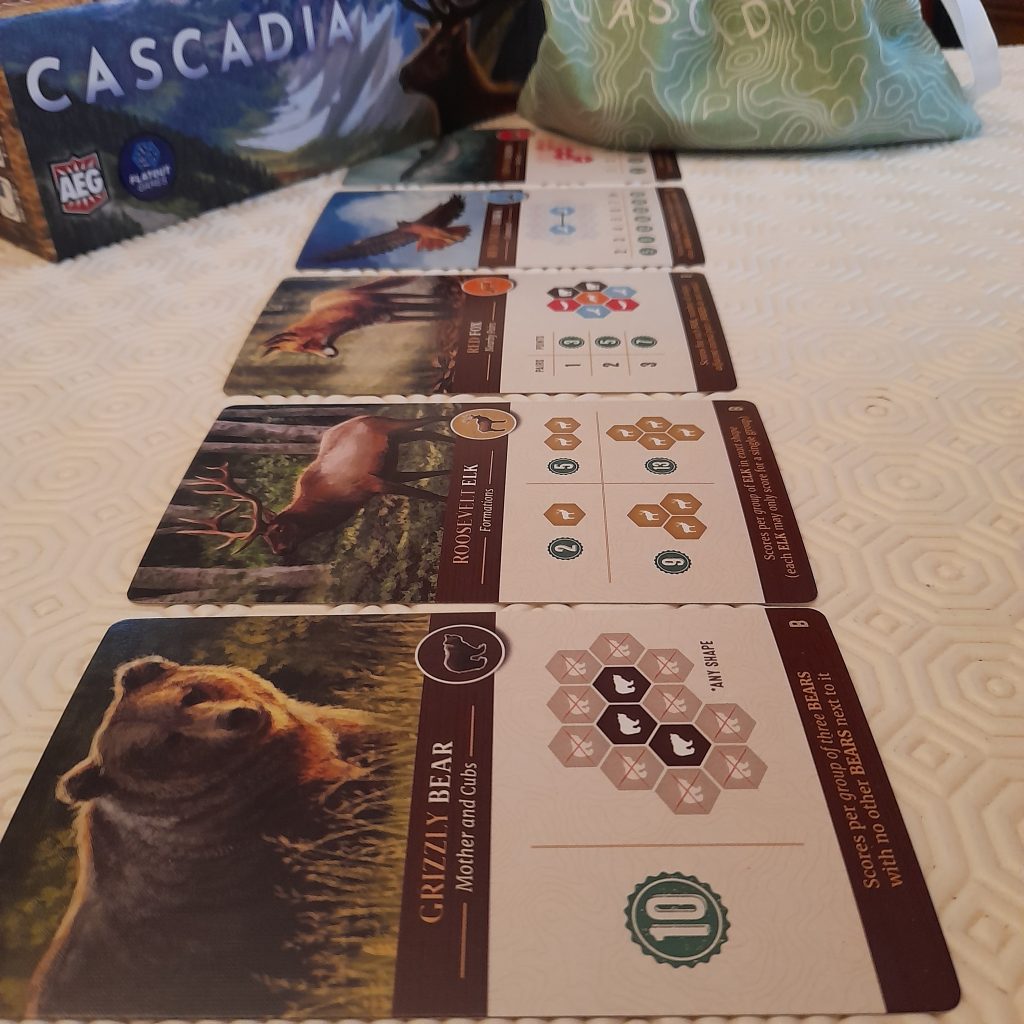
Lone Bear!
Okay, so the above would not the best strategy in the point scoring stakes, but playing Cascadia by myself is pure puzzly joy. It’s not flashy. It doesn’t take an age to set up. There’s no complicated AI to operate. It is just me, a stack of hex tiles, a bag of tokens, and 5 cards. 20 turns to make something satisfyingly synergistic. And my brain likes it. No, my brain LOVES it.
I sit and look at the row of pairs, sometimes for a really long time. And a series of trade-offs and options run through my head. A cerebral Chinook Salmon swims around my brain suggesting this tile and pondering that objective. Everything about Cascadia feels calm. Methodical. Meditative. I almost feel like I am breathing in the fresh mountain air when playing.
And although I can sometimes be left feeling like a poor relation when solo mode in games are a simple BYOS, the added campaigns in Cascadia offer more. They bring a wonderful selection of challenges that don’t need an opponent to bring them to life.
Like Calico solo, Cascadia is simply my brain versus the game. Mitigating luck of the draw with Nature Tokens and smart choices. This is a chilled, pace-free, hygge game that hits that sweet 20 minute solo space. One that I bring to the table whenever I need to wind down after a wild day at work. A game of choice when my brain needs a hug.
Multiplayer has a similar chilled vibe. But, like the Hawk, the potential for hate drafting flies not too far over our heads. Probably because ShadowMeepleMedia and I can’t help ourselves when opportunity strikes. But in truth, Cascadia never gets to the same level of claws-out tile taking that Calico can. In Calico, I know that ShadowMeeple Media will get me on every objective, so getting in his way is a legitimate strategy. Likewise, he doesn’t find the spatial challenge difficult, so uses his time to mess with me (just because he can – see what I have to deal with??!! Hahah). But in Cascadia, we are each so focussed on making wonderful landscapes that any hex snatching is more coincidence than contrived.
I would say that solo Cascadia encourages a slightly different strategy to regular multiplayer mode. Because you always know what tiles are going to be scrapped at the end of your turn, you can almost stack the, well, stack in your favour. You can bank a tile that you know will be removed, even if you don’t need it straightaway. Not wishing to make this all about Calico, but the same chances arise there too.

Lush Landscapes!
The quality of Cascadia is what we have come to expect from the CoLab team at Flatout Games and AEG. Top quality components, excellent rule book, and heaps of thematic touches that breathe beautiful life into abstract strategy gaming. The rule book is full of gorgeous images and information about the region and the animals which inhabit it.
The stunning artwork by Beth Sobel, wooden tokens, chunky hexes and glossy cards are the same whichever copy you have (the KS version just has extra Wildlife Goals as a bonus). The thoughtful use of symbols throughout also makes this game pretty much colour independent which is great for players with CVD. I think the only thing I would have changed is the printing on the wooden Wildlife Tokens. In my set, some are quite faded. Perhaps a symbol cut into the wood in relief would have been extra lovely and just another way the natural feeling could have shined through. But I am being quite nit picky now!
The “easy to learn, hard to master” banner flies proudly over Cascadia, and is a perfect description of the game play. And don’t mention this to ShadowMeepleMedia, but when he is too busy to play, I don’t ever mind as I get Cascadia all to myself!! ?


